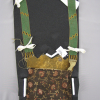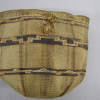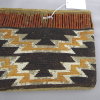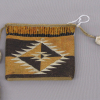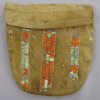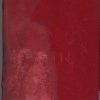Relatives/Heritage items
Displaying 1521 - 1540 of 4694 Relatives
Browsing allows you to see all the records for relatives and heritage items in the GKS. You can also search by material made, and/or filter by nations. To search by material made, type the material's name, by example 'leather', in the box below and click “Apply.” You can select multiple nations from the dropdown list by pressing “Ctrl” (on PC) or “Command” (on Mac) and clicking, then select “Apply.”
The Chippewa Band of Indians of the Township of Anderdon, agreed to surrender unto the Crown 300 acres of land to be sold, and the monies arising from their sale applied to the erection of buildings and the purchase of farming supplies.
An agreement between the Crown and the Chippewa and Munsee Bands on reserve at Caradoc, that all oak, elm, rock and walnut timber standing within the reserve shall be surrendered, and sold for the benefit of the Indians.
An Order in Council regarding a land surrender by the Ottawa and Chippewa Indians residing on Manitoulin Island. The report had been forwarded to the Executive Council for approval and ratification.
Cotton print floral fabric bag with animal hide flap with quillwork and brightly coloured beaded strap. Dates to the 18th century. Originally from from the Bibliothèque Nationale du France.
Surrender of portions of Manitoulin Island by Ottawa and Chippewa Indians, in consideration of a payment of 700 dollars, as well as other considerations including land surveys, land grants, etc. See IT238 - Copy of Order in Council
Map outlining reserve lands surrendered by the Colpoy's Bay Band of Indians. Approximately 6,000 acres were surrendered and set to be sold for the benefit of the Indians. See IT234 - Treaty document & IT235 - Copy of Order in Council
Vegetable fibre twined pouch with dyed moosehair interwoven to form geometric motifs. Thought to be of Huron-Wendat or Haudenosaunee origin, dating from the eighteenth century.
A Copy of an Order in Council regarding the Colpoy's Bay Band of Indians land surrender. See IT234 - Treaty Document & IT236 - Map
This relative, a twined gaya:ˀ, bag, pouch, is elaborated with dyed moosehair in geometric motifs. Possibly of Huron-Wendat origin and dates from the eighteenth century.
This relative currently resides in the musée du quai Branly.
A report from the Committee of the Executive Council in which it is requested that a surrender of land by the Chippewas residing at Fort William be accepted by the Governor General.
Surrender of reserve land to the Crown by the Colpoy's Bay Band of Indians. Approximately 6,000 acres were surrendered and set to be sold for the benefit of the Indians. See IT235 - Copy of Order in Council & IT236 - Map.
The Chippewa Indians residing at Fort William surrender unto Her Majesty a portion of their reserve on the Kaministagua River. The land is to be sold by the Crown for the benefit of the Indians.
Surrender of reserve land by Thessalon River Band of Indians. Land to be sold on six conditions including an annual payment of interest, land allotments, compensation for improvements, etc.
Twined pouch with moosehair-woven geometric motifs. Possibly Huron-Wendat in origin and dates from the eighteenth century.
Burden strap made with of vegetable fibre, using the twined weaving technique. The weft thread is wrapped with dyed moosehair as it is woven through the warp threads, to create the complex geometric motifs. Originally from the Bibliothèque Nationale du France.
Man's shirt. Anishnaabe. Red wool flannel with applied beaded panels worked on black velvet. Panels form a front yoke, cuffs, and a collar and are worked in multi-coloured beads in stylized floral sprays. Beads are threaded on white cotton sewing thread. The edges of the
Surrender of reserve lands by Garden River Indians. Land to be held in trust for the Indians and an annual payment of interest is to be divided among the community, also a one time payment of 1200 dollars.
Woven belt made of vegetable fibre wrapped with dyed porcupine quill, with an elaborate fringe at one end. Huron-Wendat or Haudenosaunee. Originally from the collection of the Bibliothèque Nationale du France.
Smoked moose hide pouch elaborated with bands of porcupine quill work in zigzag stitch, and single wavy lines of porcupine quill in red, blue, and white. It is thought to be Huron-Wendat in origin.
[F.W. Waugh's third notebook on Anishnaabe (Ojibwa) customs; Fieldnotes. 68 pages : handwritten, typed, with drawings and plant samples. CMC Control No. E202-3A.1.001-E202-3A.1.068. Most the data was collected in Nipigon, Ontario, all in 1916. Topics include food, canoe making, clothing and customs. ]
 Knowledge Sharing Platform
Knowledge Sharing Platform


